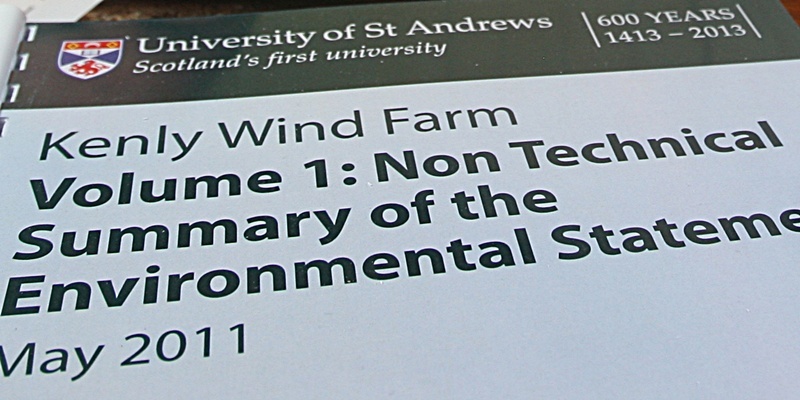Controversial proposals by St Andrews University to tackle spiralling energy costs through the creation of its own windfarm have fallen foul of council planning officials after they ruled it could detract from the picturesque town’s ”medieval skyline”.
Chiefs at the ancient seat of learning had lodged proposals to create a six-turbine site at Kenly Farm, near Boarhills. Pointing out that energy bills had tripled in the last five years and now top £5.4 million a year, they said the 12-megawatt windfarm would provide not only energy for the national grid but also a steady income stream.
However, the plans were not universally welcomed, with some residents fearing the development will create a blight on the landscape.
Planning officials at Fife Council have now thrown an additional spanner in the works, stating the planned turbines are ”too large”.
A letter by council planner Sharon Dorward outlines a number of concerns. While she does not rule out the development entirely, she suggests that the proposals should be substantially tweaked.
”It is considered that the windfarm, as is currently proposed, does not comply with Fife Council’s approved or emerging development plan policies or guidelines on wind energy development,” she ruled.
”This is not to suggest that wind turbine development is unacceptable at the application site. It is considered, however, that the scale of the current proposal, in terms of turbine height, is too large and obtrusive for the location.
”We consider that the use of a smaller type of turbine…would be more appropriate.”
Ms Dorward is particularly concerned the windfarm would represent a literal blot on the landscape.
”The adopted St Andrews area local plan 1996 states that development proposals will not be acceptable if they are likely to have an adverse effect on, or detract from, St Andrews’ medieval skyline,” she said.
”It is considered that the impact of the turbines as currently proposed would be more significant than the applicant has concluded.
”It would not be acceptable for the full length of the turbine blades or any turbine hubs to be visible over the landscape horizon, as is currently illustrated in the wireframe visuals provided in support of the application.”
Ms Dorward warned that the iconic view of the historic spires and rooftops of St Andrews from the West Sands could be badly compromised should the turbines be constructed.
”The panoramic view from the West Sands, which takes in the sweep of St Andrews Bay … would include the windfarm on the horizon,” she said.
However, all is not lost for the university, with Ms Dorward suggesting a compromise may be possible.
”Following careful consideration of the merits of the proposal the council is willing to work with (the university) to find an acceptable solution that will resolve the issues identified,” she continued.
”The application site is more suitable for lower developments up to 50 metres in height. It is appreciated that a reduction in turbine height is unlikely to generate the same energy output for the university; however, reducing the height of the proposed turbines would be more compliant with Fife Council’s guidance and planning policies, while still allowing the university to generate renewable energy and reduce its carbon footprint.”
When contacted by The Courier, a university spokeswoman was remaining upbeat.
”We welcome the assurance from Fife Council to work with us to resolve this matter, and don’t regard it as a setback,” she said. ”We remain fully committed to, and excited by, this very important project which will help reduce carbon emissions, help the university meet our Scottish Government renewables targets, help increase the £300 million annual contribution which the university already makes to the Fife economy and hopefully add to Fife’s growing reputation in Scotland and Europe as a leader in the development and application of renewable technologies.”
